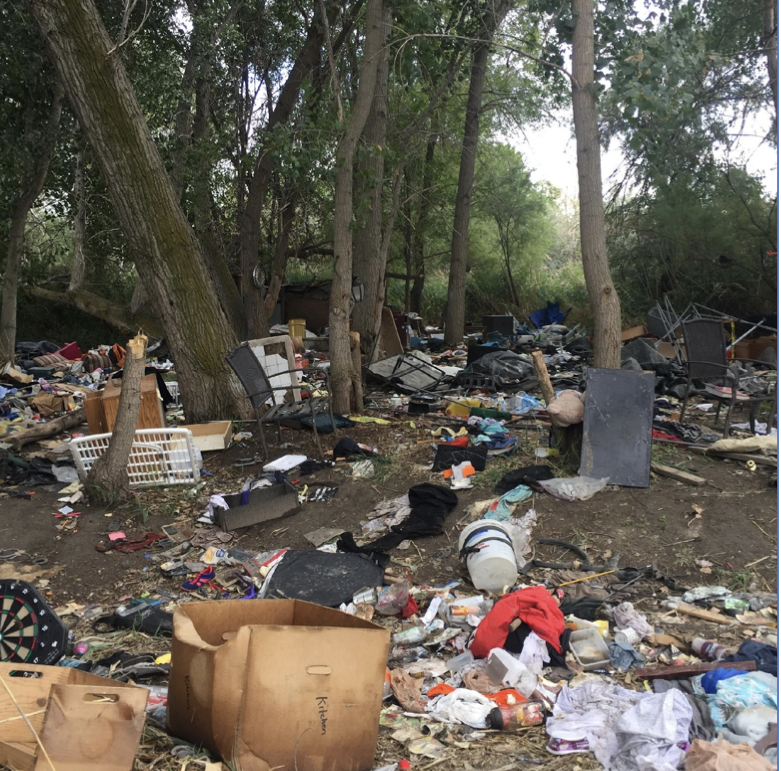
Will the Great Salt Lake Become a Casualty of The Mega Drought?
With impending population growth and the increasing scarcity of water, there is a battle brewing over Utah‘s environment and future.
“The Mega Drought” is what some are calling this very dry 2021 water year in Utah and the entire Great Basin area. Lake Powell is at its lowest level since inception and the Great Salt Lake is also at record low levels.
The majority of dams and reservoirs in Utah and the Great Basin are under 50% full. Colorado, Nevada, and Arizona are all beginning to take concerted conservation measures, but here in Utah, there has been very little done in terms of implementing long-term water conservation measures.
The latest forecasts predict that if things don’t improve by May next year, Glen Canyon Dam will no longer be able to produce hydroelectricity. Recently, Utah Stories spoke to farmers in Northern Utah who said that if nothing improves, there is a possibility of running out of water in Pineview Reservoir, which will impact thousands of Utah residents in Weber and Box Elder Counties.
Political leaders in Utah are discussing measures that could dramatically improve our water situation with projects moving forward to put four dams on the Bear River and another project to put a pipeline from Lake Powell to pump water to Washington County to feed Saint George’s booming population.
Utahns consume the most water per capita second only to Idaho. We have never had much need to conserve water due to our proximity to the Rocky Mountains and the Wasatch Range and the high mountain annual snowfall exceeding 551” per year at Alta, Utah. Water usage is something like a commandment, as Latter-Day Saint President Brigham Young told pioneers to “Make the desert blossom as the rose.” And indeed, green grass and thirsty plants are ubiquitous along the Wasatch Front.
But now conservation is the most logical answer to the problems caused by the megadrought because put simply: if we don’t conserve, we stand to lose the Great Salt Lake — an ecological marvel that hosts millions of migratory birds each year. We will get into this in greater detail a little later. We will also get into the reasons why we should conserve rather than build expensive pipelines and more dams.
The Big Picture of Water Conservation in the Great Basin States
The seven Great Basin States reliant upon the Colorado River are interdependent in overall water usage, due to their reliance on the Colorado River Drainage Basin and the Colorado River. Currently, California, Nevada, and Arizona are relying on water stored in Wyoming to mitigate the drastic shortage of water they have in Lake Mead and Lake Powell.
The Bureau of Reclamation is diverting water from Flaming Gorge Dam in Utah and Wyoming to allow for more water downstream for Lake Powell and Lake Meade. This is happening now because Lake Powell’s water back in June was evaporating at a rate of two feet per day. Nevada’s Lake Mead just outside of Las Vegas is also drastically low.
To put this problem into perspective, between Arizona, Nevada, and California, 40 million residents now rely on this water. Forecasters are saying that if we don’t have a great water year, starting when the snow starts falling in the Rocky Mountains in November, there is likely to be some serious shortages for these areas and their residents.
The ten-year drought we find ourselves in is due to increasing temperatures due to climate change and our blazing hot summer of 2021.
These impending problems have put the Utah State Legislature in motion. They are now calling for the construction of additional dams and water projects in efforts to maintain a greater water supply in Northern Utah. They are also trying to move forward with a controversial plan to pump and divert millions of gallons of water from Lake Powell to Washington County and Saint George.

Why Building More Dams Isn’t the Answer
Dams have been the main solution for the past 100 years in the west because they not only store away water for dry years, but they generate electricity. Dams offer recreational opportunities and tax revenue, but we can’t forget the environmental impact of dams: they decimate natural ecology, fish habitats, and wetlands. And if we examine 50 or so dams that have been built in the Great Basin in the past one hundred years, while certainly, they have helped to facilitate population growth, the treasures that have been inundated by dams are substantial.
Already, dams such as Glen Canyon are proving to be far less effective than predicted in maintaining long-term supplies of water and electricity. In the past thirty years, drip irrigation methods in tandem with strict water scheduling and curtailed domestic yard usage have demonstrated that water use can be drastically reduced even while populations swell. We will demonstrate this later in the story. But in Utah, we love our green lawns and colorful flower beds, native-plant landscaping is rare.
Water Consumption Comparison
Here in Utah, we are the highest per capita in public-supply domestic water consumption in the nation. Idaho exceeds Utah in overall domestic consumption per capita if private use is included. California consumes overall far more water as a state than Utah, but California has 32 million people to Utah’s 2.4 million people. And California produces $50 billion worth of food annually, to Utah’s $1.8 billion.
Environmentalists are calling for the conservation and preservation of wetlands, rivers, and domestic and agricultural water conservation. However, the Utah State Legislature wants to see the giant water projects (dams and pipelines) progress, and they are maintaining closed-door meetings to prevent public and environmental groups from thwarting their efforts.
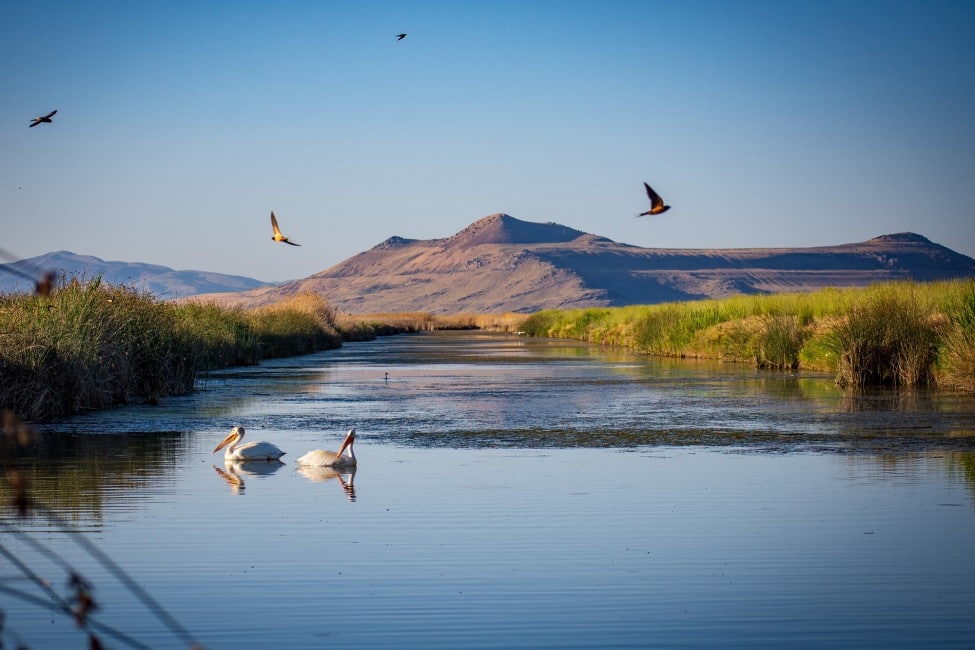
The Bear River Dams Project
According to the Utah Rivers Council, a proposal for the Bear River Dam Project to build 4 new dams at a price of $2.9 billion is moving forward and collecting tax dollars. If these plans become a reality, it will remove the primary source of water that feeds the Great Salt Lake Wetlands, which hosts 8 million birds of more than 300 species.
So how do we balance conservation vs. dam building? And what is a better methodology: saving water, reducing water consumption, or building our way out of our shortages by damming more rivers to serve a growing population?
The Bear River Water Project, if passed, is a $2 billion project that will divert more water away from the GSL to build four more dams. These dams will allow for more development projects where there is still plenty of farmland to build on top of.
If our developers/politicians have their way, they will build more homes that have bigger lawns, without concern for water conservation or limitations. In their eyes, this will make these projects easier to sell. But what they fail to recognize is that if this passes, the Great Salt Lake will very likely completely dry up in the next twenty years, and there will be the even worse air quality in the Salt Lake Valley, because absent the Great Salt Lake, we will have a dry lake bed that will, as mentioned earlier, produce harmful contaminants in our airshed and further decimate migratory bird habitats. We will essentially kill the greatest ecological benefit to birds west of the Mississippi River. But, they would argue we need to do this to facilitate our massive population boom.
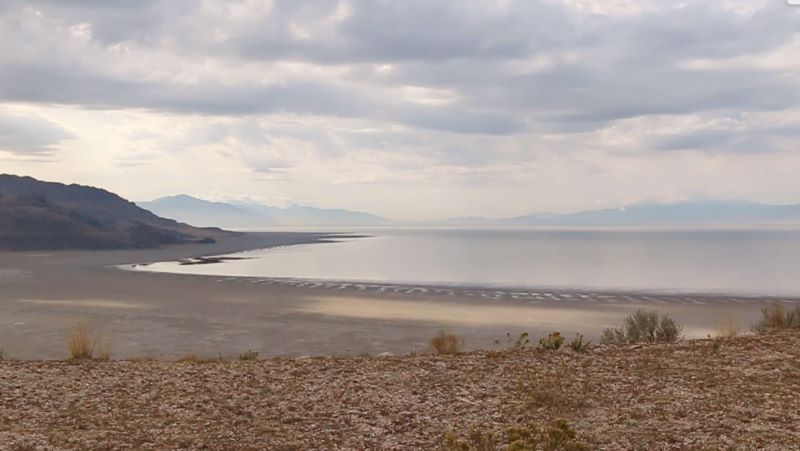
The Great Salt Lake And the Health and Ecology Hazards
The Great Salt Lake is one of the western United States’ few terminal inland lakes. For the past one hundred years, it has been treated as wasted space by our Utah State Legislature and hungry developers. I’m going to provide a rundown regarding that a little further in the program.
Today the Great Salt Lake has just 50% of the surface area it had thirty years ago. This directly impacts the amount of snow we receive in our Wasatch Mountains because of our famous “lake-effect storms”. These storms literally feed clouds with moisture that dumps in the mountains.
Also, with the Great Salt Lake at just 56% of capacity, the dry lakebed is becoming a public health hazard. When winds pick up, the dried dust has a percent of arsenic and heavy metals. When the wind blows over this surface, the particles get into the air as dust and we end up breathing it and suffering health consequences. In addition to the health hazard, as the lake recedes, the wetlands are shrinking and the migratory birds have fewer places they can go.
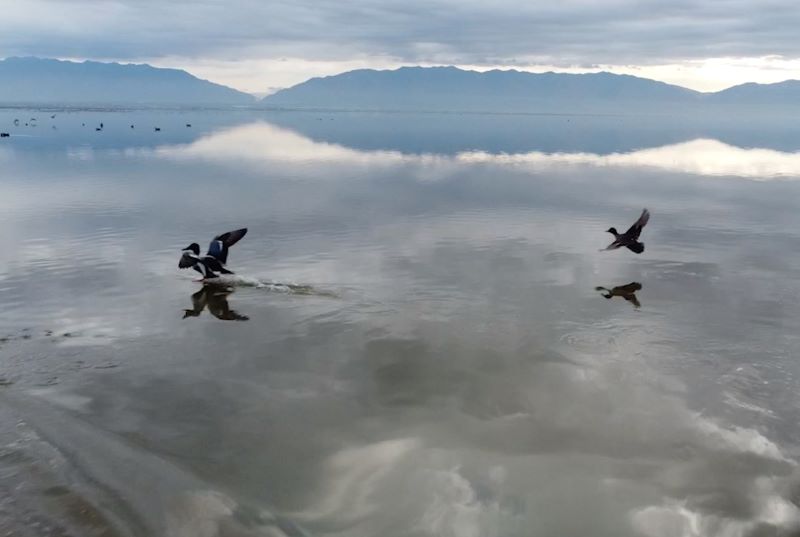
This migratory bird ecosystem is already experiencing a population collapse of both birds and insects. There are currently an estimated 3 billion fewer birds than there were forty years ago, and trillions of fewer insects. But rather than take measures to mitigate this collapse, it appears that our leaders are taking measures to hasten it.
Our state legislature decided to move the state prison to the shore of the lake in the swamp, and also build what they call an “inland port”. Building over a swamp is more difficult than our leaders assumed, and the costs for the prison have already doubled from initial estimates, currently at $1 billion, and still rising.
Further, the insecticide bill keeps increasing as well. We pointed out in previous episodes the amount of insecticide to maintain just the worksite, even before any prisoners arrive on site, is not only very costly but also terrible for the ecosystem. The insecticide targets mosquito larvae. But in killing mosquitos, it ends up killing the food source for the millions of migratory birds who visit the Great Salt Lake each year, and because it appears that our Utah State Legislature has its own type of compliance or cancel culture, even environmental-minded Republicans appear afraid to speak up for fear of being labeled as kooks or leftists. So it appears that nobody is speaking up within the chambers of our legislature for the environmental costs. But up north, there are some even more damaging ecological efforts brewing.
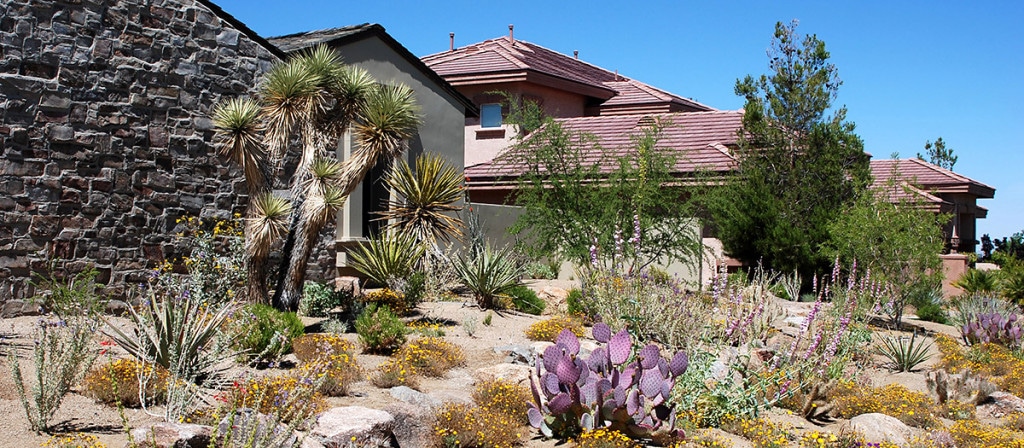
A Better Model for Population Growth: Clark County, Nevada
But Utah isn’t alone in the Intermountain West with a booming population. Clark County, Nevada, in the Las Vegas Valley, is also experiencing a massive building boom. In the fastest-growing city of Henderson, Nevada, they are building at an even more rapid pace than Utah. But they maintain this boom by using just one gallon of water for every three gallons we use here in Utah. (IOW: Three times less). This is because they introduced extreme water-saving measures that were written into building codes and municipal law. They are seriously kicking Utah’s rear-end in conservation measures, and their environment is benefiting. How did they manage to get there?
In 2002, the Las Vegas Valley Water District implemented the most stringent and progressive water conservation efforts in the country. This is the result, according to Las Vegas Water District’s Website:
The community used 23 billion gallons less water in 2020 than in 2002, despite a population increase of more than 780,000 residents during that time. This represents a 47 percent decline in the community’s per capita water use since 2002.
Let’s break that down:
They increased their population by nearly a million people and at the same time they are consuming almost 50% less water.
In the same city that hosts the Bellagio fountains; the Winn waterfall; The Mirage Waterfall; along with acres of golf courses in the desert, they are practicing the most stringent water conservation in the world. According to Springer Open:
Las Vegas managed to cope with water scarcity all the while enabling hotels and casinos to perpetuate the illusion of abundance.
Las Vegas and Henderson do not allow for lawns or sprinklers but exclusively drip irrigation. They pay cash for residents to remove their grass and replace it with desert landscaping. They restricted the use of water for golf courses. And they recently realized they could save an additional 10 billion gallons of water by removing grass from all public road medians and unnecessary spaces.
They took these extreme measures because they get more than 70% of their water from Lake Mead. The massive bathtub ring clearly demonstrates on the cliff walls their increasing scarcity. Their water supply is rapidly diminishing. Water levels were clearly 40 feet higher two decades ago. Today they are at all-time lows.
The landscaping of yards and public spaces in Clark County matches the surrounding desert climate and native desert plants. Las Vegas Wash has been converted to a bird sanctuary with a habitat that now attracts dozens of species of birds including sandhill cranes and storks.
Lake Las Vegas has recently built a large network of bike trails that travel through the desert in and around Lake Las Vegas and Lake Mead. It’s a harsh desert climate, but the thousands of trees and desert shrubs they have planted don’t waste a drop of water but enhance the new inhabitants from California who pay about half the amount for housing in Henderson compared with Orange County.
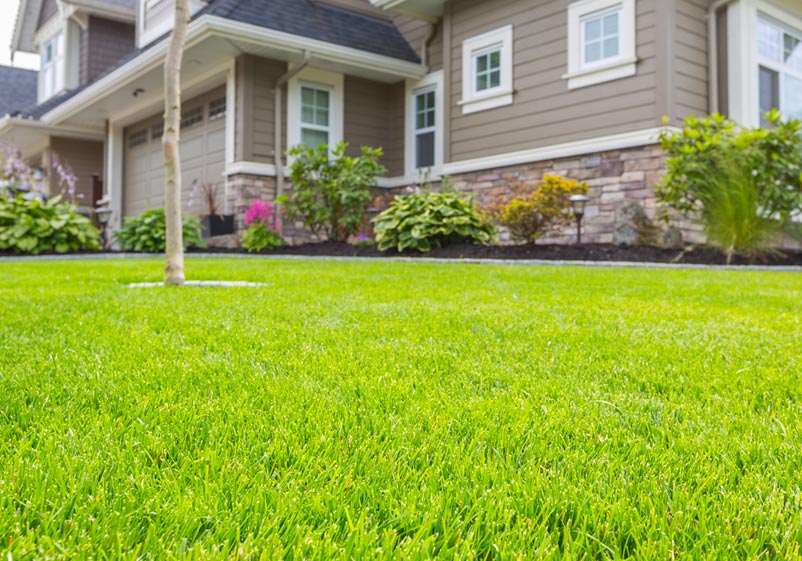
The Big Question: Why Can’t We Do This in Utah?
So, why can’t we steal these ideas from Nevada and implement some of them in Utah?
Why can’t we tell developers and existing homeowners that they should use less water, or allow for tax benefits for those who use less water? Why can’t we take these measures and save our Great Salt Lake for our winter storms, our ecology, and future generations?
Because according to the Utah Rivers Council, Utah has a water cartel. There are a few powerful leaders who want to keep the water under their power, and they want to see that they can wield their power using water as leverage to gain more power and convert their power into money. If Utah started conserving water and using less, their power would be diminished because then it would prove that we can indeed do a much better job, and we don’t need their water as much as they would like to believe.
If we could conserve like Henderson, Nevada, we could allow for far more water to end up in the Great Salt Lake, we could restore the levels of our reservoirs, and we could improve the quality of our riparian corridors. But instead, the water-hoarding policies and waste continue in Utah.

The Lake Powell Pipeline
The Lake Powell Pipeline project is a multi-billion dollar effort to take water from Lake Powell and divert it uphill through a series of pipelines powered by pumps to deliver more water to Washington County. We won’t get into all of the details concerning this project, but it’s a huge amount of money to saddle taxpayers with, and it would divert an enormous amount of water from the Colorado River to Saint George, based on an antiquated calculation of how much water Utah’s share of the Colorado River should be.
Does Washington County need water? If you ask the developers, they will tell you “yes!” But if you ask new homeowners, they will say that the city is doing little to nothing to conserve existing water resources, and the water consumption numbers speak for themselves.
Washington County consumes three times more water per capita than neighboring cities in Arizona and Nevada, and they have very few conservation efforts in place, unlike their neighbors in Las Vegas and Henderson, two hours to the south.
So, the water cartel is maintained by the overconsumption of water in municipalities. Furthermore, we use a large portion of our water for agriculture here in Utah. And unfortunately, this is where most environmentalists have it wrong.
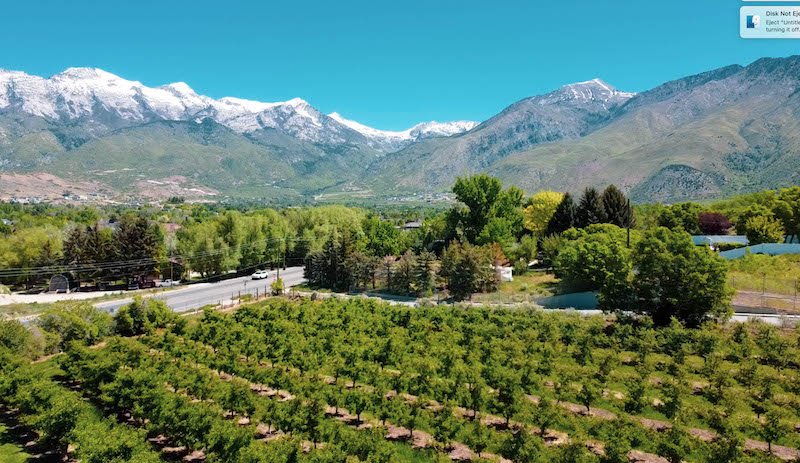
Why Not Develop Over More Farms And Use Agricultural Water for Growth?
Many environmentalists and water conservationists believe that we need to remove farms in Utah so that more of the water can go to feed the population centers and the rivers and lakes. But hastening the demise of Utah’s disappearing farms is not the answer to water conservation.
Indeed farms and agriculture use more water in Utah than domestic water usage by far. Approximately 85% of all water consumption in Utah is used for agricultural production. But farms can use far less water when incentives and rewards are established to allow farmers to get fair market value for their water conservation efforts. And just a ten percent decrease in agricultural usage could result in a 100% increase in domestic usage.
Utah Stories has strongly supported measures and support for local farmers because we need to practice greater local food self-reliance in Utah. Just 17% of the land is ideal for farming, and we are building over our best farmland at an alarming pace (around 32 acres per week) according to the American Farmland Trust. Also, the foods we enjoy the most are on the lands being developed the fastest: 91% of the acreage devoted to fruit trees, tree nuts, and berries are directly in the path of development. Utah Stories reported on this in our June 2021 Farm issue.
Secondly, farm preservation is essential to our quality of life and to our local social fabric. The booming farmers markets along the Wasatch Front, and Utah’s highly successful, farm-to-table restaurants demonstrate these trends. Farmland can be the “highest and best use” for land if we prioritize our local food supply more than development projects that build over Utah’s most fertile soil and farms. As rising fuel and energy costs increase the prices for all fresh agriculture imports, local farms and local food become an even greater priority.
WATCH THE VIDEO
To Summarize
Water is a huge issue facing the growing population in Utah. How we direct the use and conservation of our water will determine our future quality of life as the Wasatch Front population continues to swell.
This issue needs to be addressed with common sense approaches. It’s unfortunate that the environmental conservation groups are not getting an audience with the decision-makers in the state legislature. And the two sides are talking past each other as with so many other pressing issues Utah is faced with.
To support our efforts to get the two sides to speak to each other, and to push for smart water-conservation efforts, support this channel and Utah Stories’ continuing coverage of this important issue by visiting UtahStories.com and subscribing to our print magazine. U





